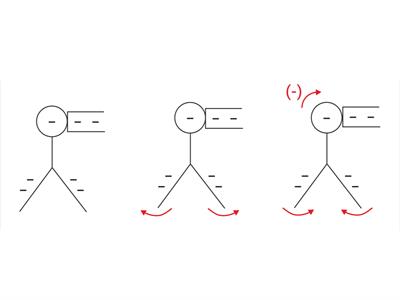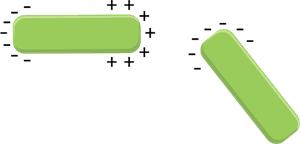PDF chapter test TRY NOW
Transfer of charges by conduction:
- When an ebonite rod is rubbed with a woollen cloth, electrons from the woolen cloth are moved to the ebonite rod.
- Now, ebonite rod turns into a negatively charged body. When it is brought near the paper cylinder, the rod's negative charges are attracted by the positive charges in the paper cylinder.
- When the cylinder comes in contact with the ebonite rod, some of the negative charges are moved to the paper. Thus, the negative charges in the rod are repelled by the negative charges in the cylinder.
- Therefore, we conclude that charges can be transferred from one object to another by bringing it in contact. This method of transferring charges from one body to another body, using the method of touching, is called transfer by conduction.

The above image shows the transfer of charges from one body to another due to the conduction
Transfer of charges by induction:
We studied that we could charge an uncharged object when we touch it with a charged object. It is possible to obtain charges in a body without any physical contact with the other charged bodies. The method of charging an uncharged body by bringing a charged body closer to it without touching is called induction. The uncharged body acquires an opposite charge at the near end and a similar charge at the farther end.
Similarly, when a positively charged body is brought near an uncharged body, negatively charged electrons are attracted. As a result, there is an accumulation of electrons at the nearer end and a deficiency of electrons at the farther end. The nearer end of the uncharged object becomes negatively charged, and the farther end becomes positively charged.

A charged body is taken near to a neutral body.

Separation of charges occurs in the neutral body in the presence of a negatively charged body at one end.

Grounding the negative charges.

Now the neutral body becomes a positively charged body without touching.
